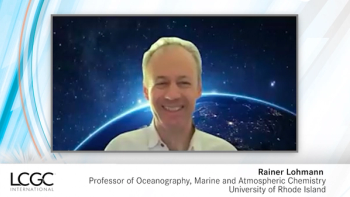
The panel concludes by envisioning the future of PFAS research and analysis.

Dr. Stefan van Leeuwen is a Senior Scientist at Wageningen Food Safety Research, part of Wageningen University & Research, Wageningen, The Netherlands.

The panel concludes by envisioning the future of PFAS research and analysis.

The conversation turns to collaboration—highlighting the value of cross-sector partnerships in advancing PFAS science, securing funding, and fostering scientific progress.

Panelists discuss the creation and use of PFAS libraries and databases, stressing the need for comprehensive, up-to-date resources to support accurate compound identification.

Scientists examine the role of non-targeted analysis in discovering unknown PFAS, and how automation and data processing tools are accelerating this work.

The panel examines how evolving global regulations are shaping approaches to PFAS analysis, while also highlighting how ongoing research enhances our understanding of these contaminants and informs regulatory decision-making.

In this episode the panelists unpack how laboratories can reduce background contamination and improve sensitivity through rigorous method optimization and instrument handling.

The panelists discuss the challenges of analyzing short-chain PFAS and highlights how emerging techniques like ion mobility offer promising solutions.

In this episode the panelists explore emerging analytical techniques that are enhancing PFAS quantification.

The experts explore the most pressing analytical challenges in PFAS analysis, highlighting persistent issues such as contamination, detection limits, background blanks, and other method-related obstacles encountered in the lab.

The panelists introduce their backgrounds, research focus areas, and what drew them into the field of PFAS analysis, setting the stage for a deep dive into current challenges and innovations.

The 11th International Symposium on Recent Advances in Food Analysis will be in Prague, Czech Republic from 5–8 November 2024.

Per- and polyfluoralkyl substances (PFAS) are found in our food. Sensitive, precise, and accurate analytical methods are needed to estimate human exposure to these chemicals. A comparative study was performed between two extraction and cleanup methods (solid-phase extraction [SPE] and dispersive SPE) for the analysis of PFAS in apples. Both methods showed excellent sensitivity, precision, and accuracy. dSPE has some benefits over conventional SPE, and vice versa. The advantages and disadvantages of both methods are discussed.

LCGC Europe spoke to Stefan Van Leeuwen and Bjorn Berendsen from Wageningen Food Safety Research, The Netherlands, about a novel non-targeted approach to analyze PFASs using LC–HRMS with fragment ion flagging (FIF).

LCGC Europe interviewed Stefan van Leeuwen from Wageningen Food Safety Research (WFSR), in Wageningen, The Netherlands, on his novel multi-analyte approach to investigate bisphenol A (BPA), bisphenol A diglycidyl ether (BADGE), and their analogues using liquid chromatography–electrospray ionization tandem mass spectrometry (LC–ESI-MS/MS).

Published: July 1st 2022 | Updated:

Published: October 1st 2019 | Updated: